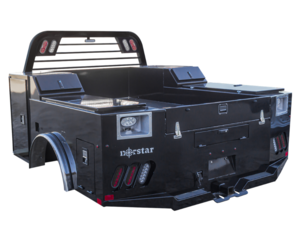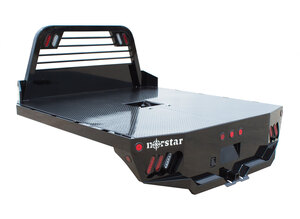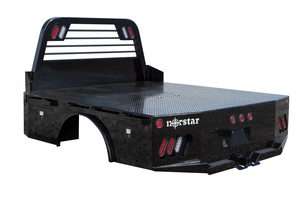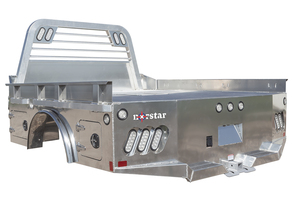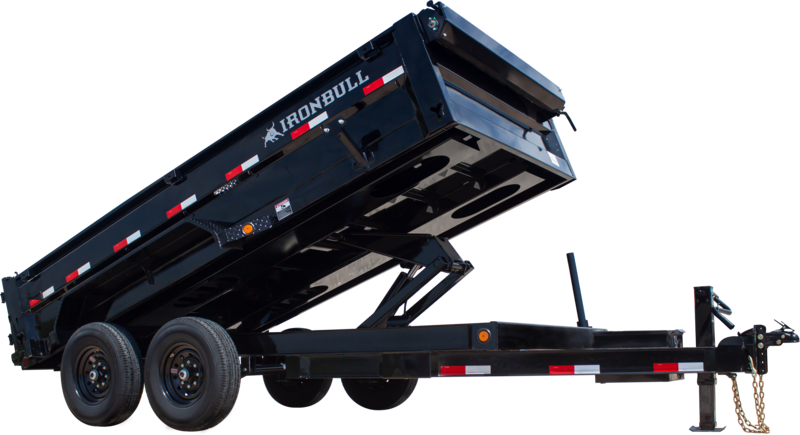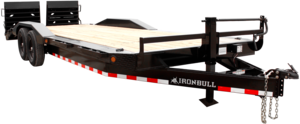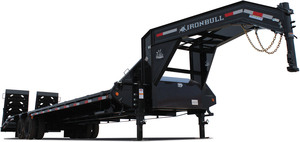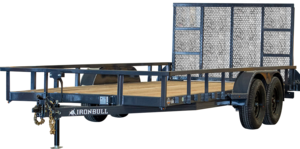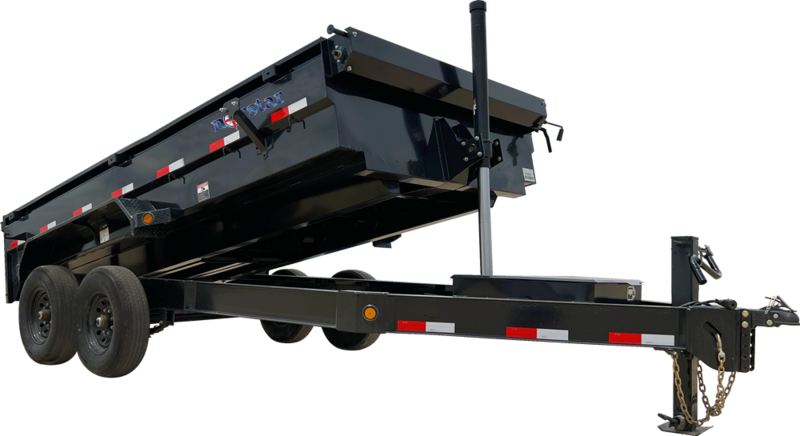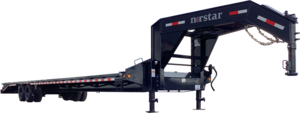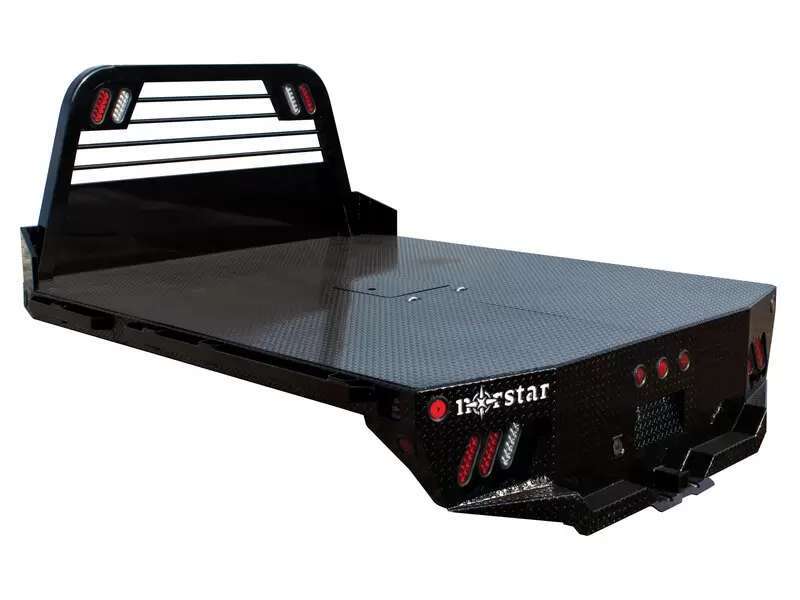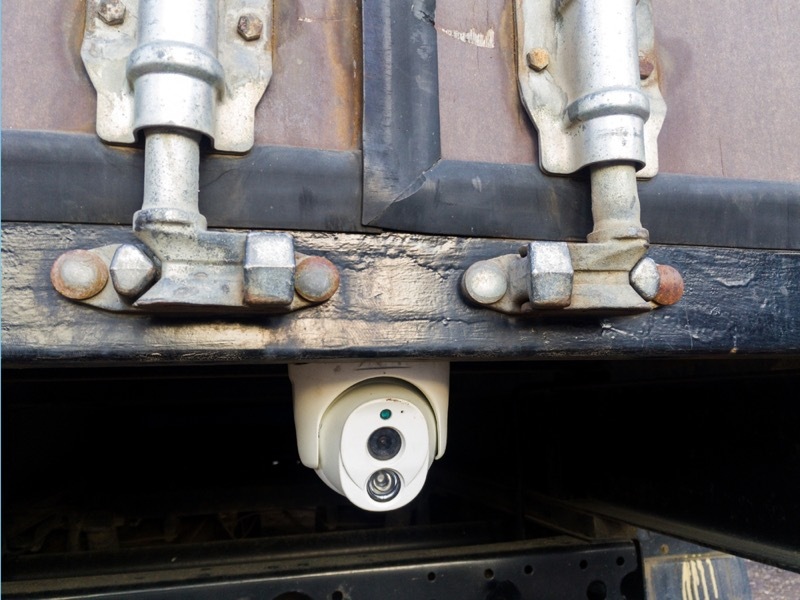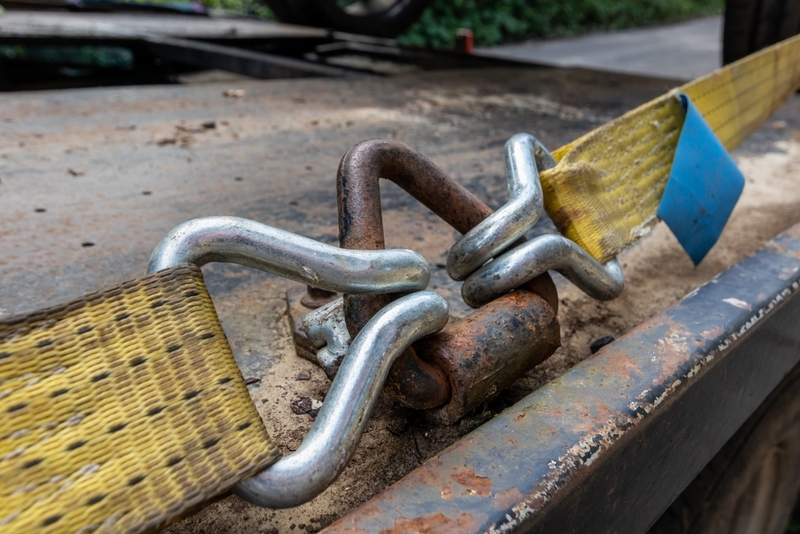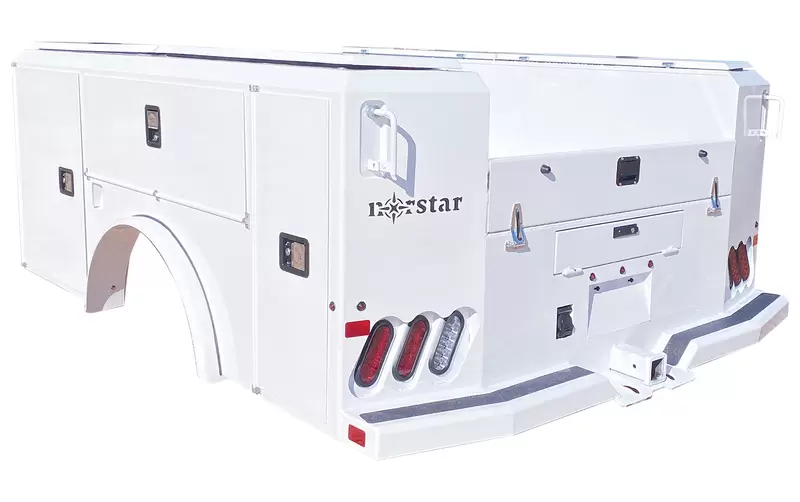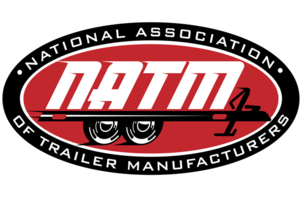How Do You Transport a Truck Bed?
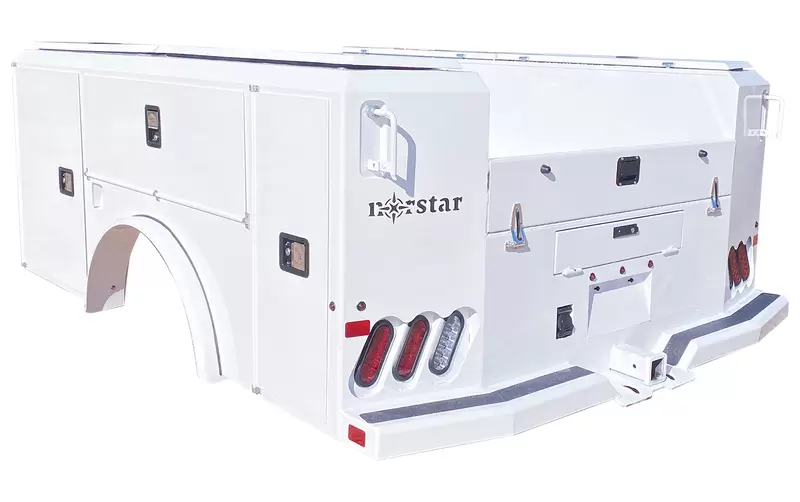
Transporting a truck bed may seem like a straightforward task, but it involves several key considerations to ensure it arrives at its destination safely and securely. Whether you're a DIY enthusiast or considering professional services, this guide will provide you with valuable insights on how to successfully transport a truck bed. We'll cover essential aspects from preparation to safety measures, ensuring a smooth journey for this crucial component of your truck.
What Are the Key Considerations Before Transporting a Truck Bed?
Before starting the task of transporting a truck bed, there are several critical considerations that should be taken into account. These considerations will not only help ensure the safe transport of the truck bed but also make the process smoother and more efficient.
Truck Bed Size and Weight
The size and weight of the truck bed are essential factors to consider. Measure the dimensions and weigh the bed to determine if it complies with transportation regulations and can be safely transported on your chosen method of transportation.
Destination
Knowing the destination is crucial. Consider the distance, terrain, and any potential obstacles you may encounter along the way. This information will help you plan the most suitable route and transportation method.
Transportation Method
Decide whether you will transport the truck bed as a standalone component or if it needs to be attached to a vehicle. The method you choose will impact the equipment and preparations required.
Legal and Regulatory Requirements
Familiarize yourself with the legal and regulatory requirements for transporting a truck bed. Depending on your location, you may need permits, and there may be weight limits and transportation regulations to adhere to.
Equipment and Tools
Ensure you have the necessary equipment and tools for securing the truck bed during transport. This may include tie-down straps, trailers, protective covers, and any additional materials required for stability and safety.
Preparation
Prepare the truck bed for transport by removing any accessories or components that could be damaged during transit. Secure loose parts, and if necessary, protect the bed's surface to prevent scratches or dents.
Route Planning
Plan your transportation route carefully, taking into consideration factors like road conditions, traffic, and any potential detours. A well-thought-out route can help you avoid unexpected challenges during transport.
Safety Measures
Prioritize safety measures for both the cargo and those involved in the transport. This includes proper securing of the truck bed, following speed limits, and observing safety protocols.
Can a Truck Bed be Transported as a Standalone Component?
Transporting a truck bed as a standalone component is a viable option, but it involves careful consideration of various factors. Firstly, the size and weight of the truck bed play a crucial role, with smaller and lighter beds being more suitable. Maintaining balanced weight distribution during transport is also essential, which is achieved by proper securing with straps and ties.
Additionally, having the appropriate equipment, complying with local regulations, and prioritizing safety measures are vital aspects. Route planning is crucial to avoid potential obstacles, and in some cases, seeking professional assistance may be advisable. Using protective measures like padding can help prevent damage during transport.
What Equipment Is Required for Transporting a Truck Bed?
Transporting a truck bed requires specific equipment to ensure a safe and efficient process.
Here are the key pieces of equipment needed:
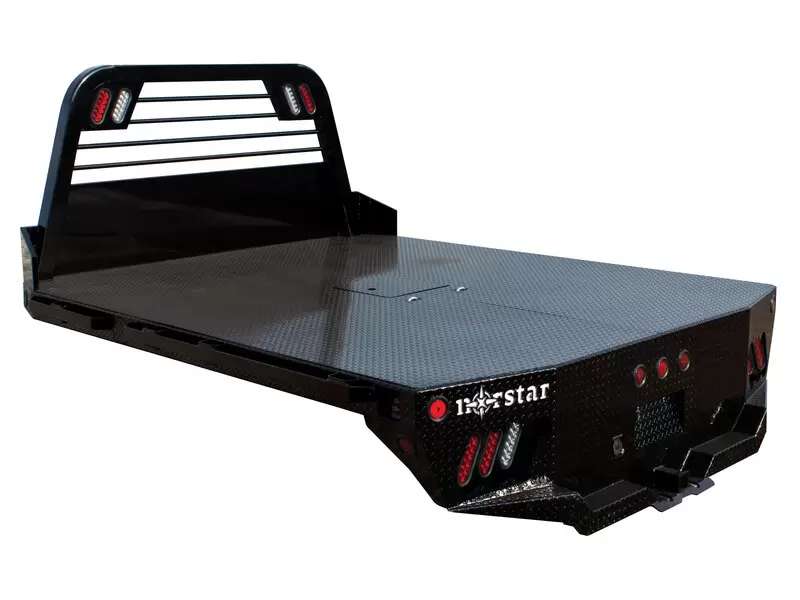
Flatbed Trailer
A flatbed trailer is the primary equipment used for transporting a truck bed as a standalone component. It provides a stable and secure platform for the bed during transit.
Tie-Down Straps
High-quality tie-down straps are essential for securing the truck bed to the flatbed trailer. These straps should be strong and durable to withstand the weight and potential movement of the bed.
Chains and Binders
Chains and binders are additional securing tools that help keep the truck bed in place on the trailer. They provide extra stability and prevent shifting during transport.
Padding and Cushioning
To protect the truck bed from scratches and dents, using padding, blankets, or foam is recommended. These materials provide cushioning and reduce the risk of damage during transit.
Safety Flags and Reflectors
Depending on local regulations, safety flags and reflectors may be required to make the oversized load visible to other drivers on the road. They enhance safety during transport.
Safety Equipment
Personal protective equipment (PPE) such as gloves and safety glasses should be worn by individuals involved in loading, securing, and unloading the truck bed to ensure their safety.
Vehicle with Adequate Capacity
If you're using a vehicle to transport the bed, ensure that it has the capacity to safely carry the load. Check the vehicle's weight limits and towing capacity to prevent overloading.
Inspection Tools
Before and during transport, it's crucial to inspect all equipment, including straps, chains, and the trailer, to ensure they are in good working condition. Regular checks help maintain safety.
How Do You Safely Remove a Truck Bed for Transport?
Safely removing a truck bed for transport involves a series of steps to ensure the bed is detached securely and ready for transportation.
Here's a guide on how to do it:
1. Gather Necessary Tools and Equipment
Before starting, gather the tools and equipment you'll need, including a socket wrench or ratchet, socket set, and a helper to assist with the process.
2. Prepare the Truck
Park the truck on a level surface and engage the parking brake. Ensure the truck is turned off and the ignition key is removed for safety.
3. Disconnect Electrical Connections
Depending on your truck model, there may be electrical connections to the bed, such as tail lights or sensors. Carefully disconnect these connections to avoid damage during removal.
4. Remove Bolts and Fasteners
Locate and remove the bolts and fasteners securing the truck bed to the frame. Typically, there are several bolts along the bed's perimeter and possibly some in the center.
5. Lift the Truck Bed
With the help of your assistant, lift the truck bed using appropriate lifting equipment, such as a hoist or crane. Ensure the bed is raised evenly to maintain balance.
6. Place Supports
Once the bed is lifted, place support blocks or stands under it to keep it stable. This prevents it from tipping or falling during the removal process.
7. Lower the Truck Bed
Slowly lower the truck bed onto the supports, ensuring it rests securely. Double-check that all electrical connections are clear of any obstructions.
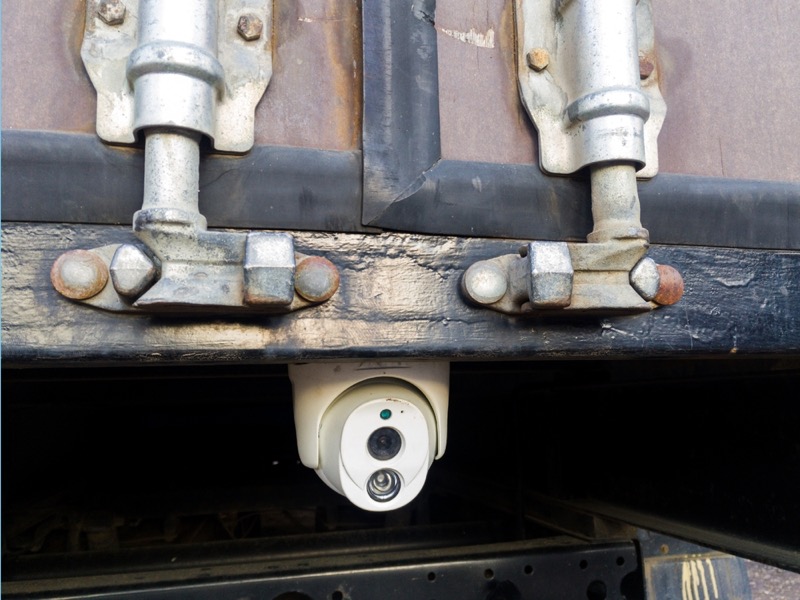
8. Secure the Truck Bed
Use straps or tie-downs to secure the truck bed to the lifting equipment or crane. This adds an extra layer of safety to prevent accidental movement during transport.
9. Inspect and Double-Check
Before transporting the bed, conduct a thorough inspection to ensure all connections are detached, and the bed is secure. Double-check the straps and supports to confirm stability.
10. Transport the Truck Bed
Once everything is in order, you can transport the truck bed to its destination using an appropriate vehicle or trailer.
Remember that the process of safely removing a truck bed may vary depending on the make and model of the truck. Always consult the manufacturer's guidelines and, if unsure, consider seeking professional assistance to ensure a secure and accident-free bed removal for transport.

Are There Legal and Regulatory Considerations for Transporting a Truck Bed?
There are indeed legal and regulatory considerations that must be taken into account when transporting a truck bed. Transporting oversized or heavy loads like truck beds is subject to various laws and regulations to ensure safety on the road.
Here are some key legal and regulatory considerations:
Permits
Depending on your location and the size of the truck bed, you may need special permits to transport oversized loads. These permits are typically issued by state or local transportation authorities and outline specific conditions and routes for transport.
Weight Limits
Most regions have weight limits for vehicles and loads. Exceeding these limits can result in fines or penalties. It's essential to calculate the total weight of the truck bed and ensure it complies with legal weight restrictions.
Dimensional Limits
In addition to weight limits, there are often restrictions on the dimensions of the load, including width, height, and length. Oversized truck beds may require special allowances or routes to transport legally.
Escort Vehicles
Some jurisdictions may require escort vehicles for oversized loads. These vehicles help guide and alert other drivers to the presence of a large load on the road.
Safety Markings
Proper safety markings and flags may be required on oversized loads to enhance visibility and safety. This includes the use of warning flags, reflective tape, and appropriate signage.
Travel Restrictions
Certain routes, bridges, and tunnels may have restrictions on the passage of oversized loads due to clearance heights and weight limits. It's essential to plan your route carefully to avoid such obstacles.
Time Restrictions
Some areas may impose time restrictions on the transportation of oversized loads. For example, travel may be limited to specific hours of the day or days of the week.
Safety Regulations
It's crucial to adhere to safety regulations when transporting a truck bed. This includes securing the load properly with high-quality straps, chains, and tie-downs to prevent accidents or cargo shifts during transit.
Insurance Requirements
Ensure that your cargo insurance coverage is sufficient to protect against potential damage or loss during transport. Verify if additional coverage is necessary for oversized loads.
Documentation
Keep all necessary documentation readily available, including permits, licenses, and proof of insurance. Failure to provide the required paperwork can lead to legal issues.
Local Variations
Regulations can vary from one jurisdiction to another, so it's crucial to research and comply with the specific requirements of the areas through which you plan to transport the truck bed.
How Should a Truck Bed be Secured for Transportation?
Securing a truck bed for transportation is crucial to ensure it arrives safely and without any damage.
Here's what you need to do:
Use high-quality tie-down straps and make sure they are tight and secure to prevent any movement during transit.
Balance the weight evenly on the trailer or vehicle to avoid wobbling, which can lead to instability.
Lastly, regularly inspect the straps, ties, and restraints to ensure they remain in good condition throughout the journey.
These simple steps will help you secure the truck bed effectively for a smooth transport.
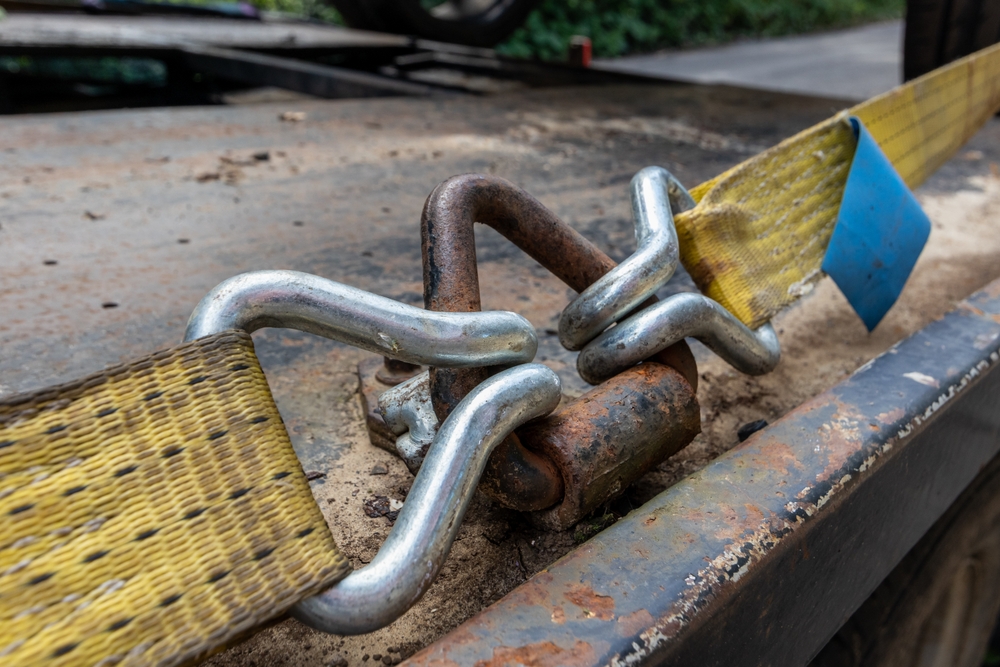
What Safety Measures Should Be Observed During Transport?
Ensuring a safe and smooth journey when transporting a truck bed isn't just about following rules. It's also a commitment to keeping everyone on the road secure and the cargo intact.
Here are some practical safety tips to make your truck bed transport both secure and engaging:
1. Strap it Securely
Start by using strong tie-down straps to secure the truck bed. This keeps it in place during transport.
2. Balance the Weight
Make sure the weight is evenly spread on the trailer or vehicle to avoid wobbling.
3. Check the Weather
Keep an eye on the weather forecast. Rain, wind, or snow can affect the transport, so plan accordingly.
4. Legal Requirements
Check local regulations for any permits or restrictions related to transporting oversized loads like truck beds. Compliance is essential to avoid legal issues.
5. Regular Inspections
Before hitting the road, inspect the straps, ties, and restraints. They should be tight and secure to prevent any movement during transport.
6. Route Planning
Plan your route carefully, considering factors like road conditions, clearances, and weight limits. Avoid tight turns and low clearances.
7. Professional Help
If you're unsure about handling the transport, consider professional assistance. Experienced transport companies have the right equipment and know-how.
8. Protective Measures
To prevent damage to the truck bed, use padding, blankets, or foam as cushioning. This safeguards against scratches or dents.
Can Professional Services Assist in Transporting a Truck Bed?
Absolutely! Turning to professionals for truck bed transportation is a smart move. These experts are seasoned in handling oversized loads, equipped with the right tools, and well-versed in the legalities. By teaming up with them, you can rest easy knowing your truck bed will reach its destination safely and efficiently. It's like having a skilled captain steering your cargo towards a smooth journey, allowing you to focus on other aspects of your project with confidence.
What Precautions Should Be Taken to Protect the Truck Bed During Transport?
To safeguard your precious truck bed during transport, a few precautions can make a world of difference.
1. Use Protective Materials
Consider using padding, blankets, or foam to cushion your truck bed. These materials act as a shield, preventing scratches or dents caused by bumps and vibrations during transit.
2. Secure Load Properly
Ensure your truck bed is securely fastened to the transporting vehicle or trailer. Use reliable straps, chains, or tie-downs to keep it in place. Regularly inspect these restraints to confirm they remain tight throughout the journey.
3. Choose the Right Route
Plan your route carefully to avoid tight turns, low clearances, or rough terrains that could put your truck bed at risk. A well-thought-out route minimizes potential obstacles and keeps your cargo safe.
Can a DIY Enthusiast Successfully Transport a Truck Bed, or Should Professionals Be Involved?
Transporting a truck bed can be a demanding task, and whether a DIY enthusiast can handle it depends on various factors. Smaller and lighter truck beds may be manageable for DIY transport, but larger or heavier beds may require professional assistance. Factors like balanced weight distribution, proper equipment, compliance with local regulations, and safety precautions must be considered. Professionals have the expertise and equipment to handle oversized loads safely and efficiently. They can navigate legal requirements more effectively, making it a wise choice for complex transport. However, DIY enthusiasts can transport smaller beds with proper planning, equipment, and adherence to safety guidelines.
Your Road to Safe Truck Bed Transport
When it comes to trucking and how to transport a pickup truck bed, safety should never be taken for granted. The need to secure cargo transport is real and important, whether you're a hands-on DIY enthusiast or prefer the expertise of professionals.
For DIYers, it's possible to transport smaller and lighter truck beds successfully. Just remember to plan meticulously, use the right equipment, and follow safety measures diligently. However, when dealing with larger or more complex loads, turning to professionals is a smart choice. Transport companies bring their wealth of experience, specialized equipment, and a deep understanding of legal requirements to ensure your cargo's safety.
For all your truck bed needs, check out Norstar Company. Discover their network of authorized dealers nearby to find the perfect truck bed solution. Whether you opt for a DIY approach or seek professional help, always prioritize safety, comply with regulations, and safeguard your truck bed. With the right approach, your truck bed will reach its destination in top condition, and Norstar will be there to support you every step of the way.
